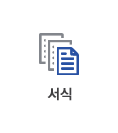목차
1. 서론
2. 본론
2.1. 주요 텍스트들과 그 재정리 및 해석의 문제
2.2. 텍스트들의 모티브별 공통분모들과 채록본의 행위소별 사건 전개
2.3. 모티브들의 유기적 연결에 의해 구현된 다양한 주제들의 적층적
깊이와 한계
3. 결론
1. 서론
지금까지 꼭두각시놀음에 관해서는 여러 학자들이 여러 각도에서 논의해 왔다. 그것들은 대체로 자료 수집 및 대본 정리, 역사적 접근, 문학적 접근, 연극학적 접근, 기타 등으로 나누어볼 수 있다. 본고에서 논의하고자 하는 꼭두각시놀음 대본에 대한 의미 해석은 주로 문학적으로 접근한 논의들에서 다루어졌으며, 특히 심우성과 임재해의 논의를 대표적인 것으로 꼽을 수 있다.
*한글97
2. 본론
2.1. 주요 텍스트들과 그 재정리 및 해석의 문제
2.2. 텍스트들의 모티브별 공통분모들과 채록본의 행위소별 사건 전개
2.3. 모티브들의 유기적 연결에 의해 구현된 다양한 주제들의 적층적
깊이와 한계
3. 결론
1. 서론
지금까지 꼭두각시놀음에 관해서는 여러 학자들이 여러 각도에서 논의해 왔다. 그것들은 대체로 자료 수집 및 대본 정리, 역사적 접근, 문학적 접근, 연극학적 접근, 기타 등으로 나누어볼 수 있다. 본고에서 논의하고자 하는 꼭두각시놀음 대본에 대한 의미 해석은 주로 문학적으로 접근한 논의들에서 다루어졌으며, 특히 심우성과 임재해의 논의를 대표적인 것으로 꼽을 수 있다.
*한글97
본문내용
『한국연극학』 제3호, 한국연극학회, 1989.
―――, 「한국전통극 꼭두각시놀음 텍스트연구 1」, 『한국연극학』 제8호, 한국연극학회, 1996.
―――, 「한국전통극 꼭두각시놀음 텍스트연구2」, 『한국연극학』 제10호, 한국연극학회, 1998.
―――, 「한국전통극 꼭두각시놀음 텍스트연구3」, 『한국연극학』 제13호, 한국연극학회, 1999.
김흥규, 「꼭두각시놀음의 연극적 공간과 산받이」, 『창작과 비평』 49호, 가을호, 1978.
유민영, 「한국인형극의 유래」, 『예술논문집』 14집, 예술원, 1975.
이상란, 「꼭두각시놀음의 담론분석Ⅰ」, 『한국연극학』 제5집, 한국연극학회, 1993.
조동일, 「무당굿놀이, 꼭두각시놀음, 탈춤」, 『연극평론』 16호, 여름호, 1977.
허 술, 「인형극의 무대」, 『창작과 비평』 38호, 겨울호, 1975.
ABSTRACT
The Meanings of \'Gokdoogaksinorum\' and the Limitations of the Meanings
Kim, Ik-doo
The purpose of this research is to reveal the meanings of \'Gokdoogaksinorum\'-the traditional puppet play in Korea-and the socio-historical limitation of the meanings. As of now, the interpretation of meanings of \'Gokdoogaksinorum\' has been nothing but summerizing of the \'story\'.
First, when I examined the various versions of \'Gokdoogaksinorum\' that have been arranged by researchers, I found the following problems: the arbitrary division of acts and scenes without considering the inner organic structure of the work itself, the disharmonious namings of acts and scenes with the inner organic structure of the work, and the misrecognizing \'sanbazi(산받이)\' as a kind of character.
Secondly, in order to minimize the misreading and deflection of meanings due to distinctions of various versions, I analyzed all the action-motives of various versions of \'Gokdoogaksinorum\' that have already been published, and drew the thirteen items of common action-motives from those versions. And dividing the action-motives more concretely, the story of \'Gokdoogaksinorum\' is divided into twenty five items of events.
Thirdly, in interpreting these twenty five items of events, I found the following three horizons of main themes: First, in this play, centering around the character of \'Parkchumzi\', there is the horizon of meaning that reveals the collapse of self-identity of the fallen \'yangban\'(the nobility), his wonderings, and his reestablishing of self-identity. Second, centering around the character of \'Hongdongzi\', there is the horizon of meaning that reveals the world view of folk-democratic inter-survival, and it\'s capacity as the subjectivity of a nation. Third, centering around the character of \'Gokdoogaksi\', there is the horizon of meaning that reveals feminism in this work and it\'s medieval limitations.
Fourthly, on the horizon of meaning that is centered around the character of \'Parkchumzi\', this play reveals that the scene of \'building and breaking down temple\' is not a \'conversion to Buddism\' but a refusal of imported religions or ideas.
Fifthly, on the horizon of meaning that is centered around the character of \'Hongdongzi\', this play reveals that the idea of this work can be related to the ideas of \'donghak(東學)\' and \'Zungsan(甑山)\'.
Sixthly, on the horizon of meaning that is centered around the character of \'Gokdoogaksi\', this play reveals that the life of woman in post-Chosun society was inprisoned deeply at the bottom of the medieval oppression.
―――, 「한국전통극 꼭두각시놀음 텍스트연구 1」, 『한국연극학』 제8호, 한국연극학회, 1996.
―――, 「한국전통극 꼭두각시놀음 텍스트연구2」, 『한국연극학』 제10호, 한국연극학회, 1998.
―――, 「한국전통극 꼭두각시놀음 텍스트연구3」, 『한국연극학』 제13호, 한국연극학회, 1999.
김흥규, 「꼭두각시놀음의 연극적 공간과 산받이」, 『창작과 비평』 49호, 가을호, 1978.
유민영, 「한국인형극의 유래」, 『예술논문집』 14집, 예술원, 1975.
이상란, 「꼭두각시놀음의 담론분석Ⅰ」, 『한국연극학』 제5집, 한국연극학회, 1993.
조동일, 「무당굿놀이, 꼭두각시놀음, 탈춤」, 『연극평론』 16호, 여름호, 1977.
허 술, 「인형극의 무대」, 『창작과 비평』 38호, 겨울호, 1975.
ABSTRACT
The Meanings of \'Gokdoogaksinorum\' and the Limitations of the Meanings
Kim, Ik-doo
The purpose of this research is to reveal the meanings of \'Gokdoogaksinorum\'-the traditional puppet play in Korea-and the socio-historical limitation of the meanings. As of now, the interpretation of meanings of \'Gokdoogaksinorum\' has been nothing but summerizing of the \'story\'.
First, when I examined the various versions of \'Gokdoogaksinorum\' that have been arranged by researchers, I found the following problems: the arbitrary division of acts and scenes without considering the inner organic structure of the work itself, the disharmonious namings of acts and scenes with the inner organic structure of the work, and the misrecognizing \'sanbazi(산받이)\' as a kind of character.
Secondly, in order to minimize the misreading and deflection of meanings due to distinctions of various versions, I analyzed all the action-motives of various versions of \'Gokdoogaksinorum\' that have already been published, and drew the thirteen items of common action-motives from those versions. And dividing the action-motives more concretely, the story of \'Gokdoogaksinorum\' is divided into twenty five items of events.
Thirdly, in interpreting these twenty five items of events, I found the following three horizons of main themes: First, in this play, centering around the character of \'Parkchumzi\', there is the horizon of meaning that reveals the collapse of self-identity of the fallen \'yangban\'(the nobility), his wonderings, and his reestablishing of self-identity. Second, centering around the character of \'Hongdongzi\', there is the horizon of meaning that reveals the world view of folk-democratic inter-survival, and it\'s capacity as the subjectivity of a nation. Third, centering around the character of \'Gokdoogaksi\', there is the horizon of meaning that reveals feminism in this work and it\'s medieval limitations.
Fourthly, on the horizon of meaning that is centered around the character of \'Parkchumzi\', this play reveals that the scene of \'building and breaking down temple\' is not a \'conversion to Buddism\' but a refusal of imported religions or ideas.
Fifthly, on the horizon of meaning that is centered around the character of \'Hongdongzi\', this play reveals that the idea of this work can be related to the ideas of \'donghak(東學)\' and \'Zungsan(甑山)\'.
Sixthly, on the horizon of meaning that is centered around the character of \'Gokdoogaksi\', this play reveals that the life of woman in post-Chosun society was inprisoned deeply at the bottom of the medieval oppression.























































소개글